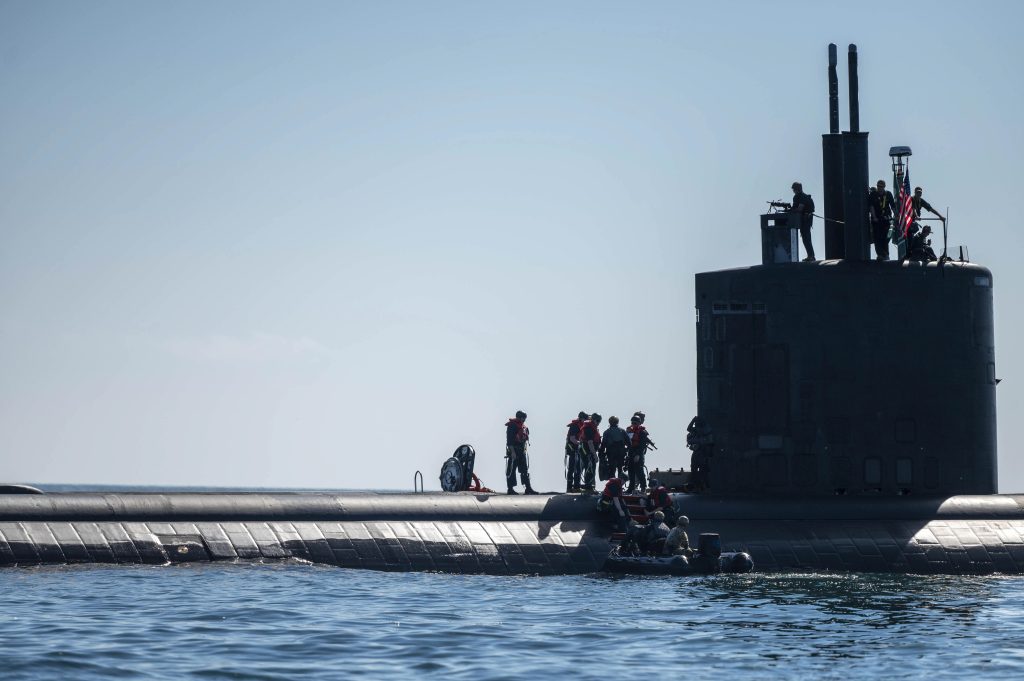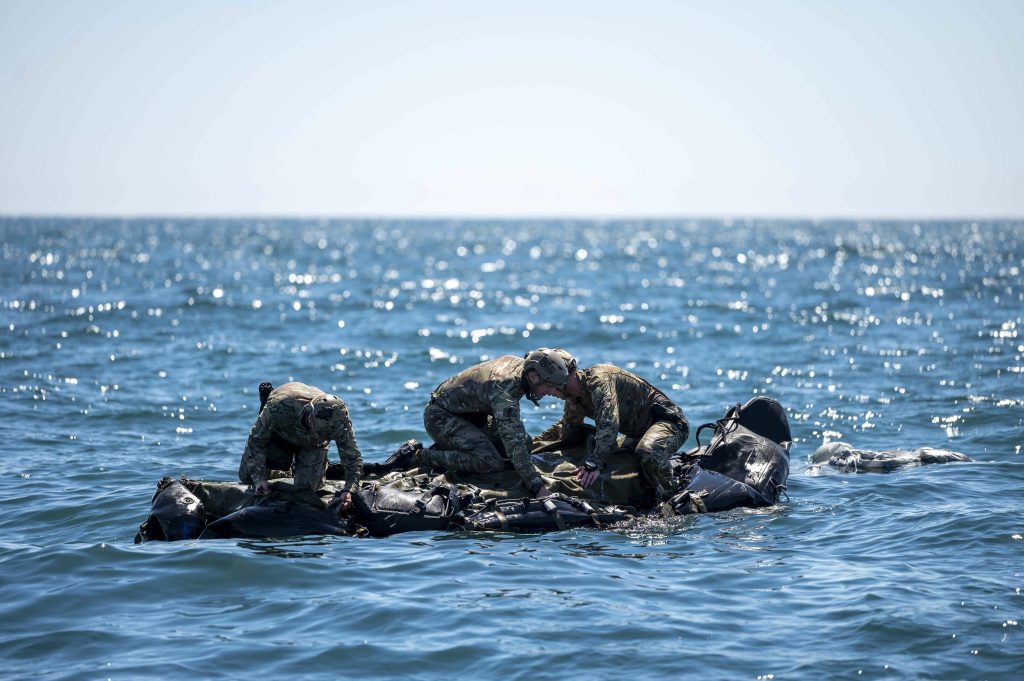
West Coast-based Naval Special Warfare (NSW) operators participated in fleet interoperability training off the coast of Southern California June 24, focusing on increasing warfighting capabilities in the maritime domain.
The training involved aircraft from Commander, U.S. Naval Air Forces and the Los Angeles-class attack submarine USS Greeneville (SSN 772), assigned to Commander Submarine Squadron 11 (CSS-11).
“This training opportunity provided the submarine warfighters aboard USS Greeneville the opportunity to practice a unique capability,” said Capt. Kenneth Douglas, Commander, Submarine Squadron 11. “Expanding joint interoperability capabilities effectively demonstrates our asymmetric advantage on and under the world’s oceans and I look forward to continued training events with our Naval Special Warfare operators.”

During the training, Naval Special Warfare (NSW) operators performed a military freefall and conducted an airborne drop of combat rubber raiding crafts (CRRC) off the coast of Southern California. Following this, the NSW operators rendezvoused with Greeneville at a designated location before returning to shore.
“Undertaking an operation of this caliber highlights the indispensable role that NSW and the submarine force play within the joint force,” said Capt. Blake L. Chaney, Commander, Naval Special Warfare Group 1. “By synchronizing our operations, activities and investments, we not only bolster fleet lethality but also provide substantial value in securing access to either denied or contested areas.”

Engaging in ongoing training with Naval Special Warfare and Commander Submarine Squadron 11, ensures that the U.S. Naval force is well-prepared to tackle the challenges of a dynamic and competitive maritime environment.




